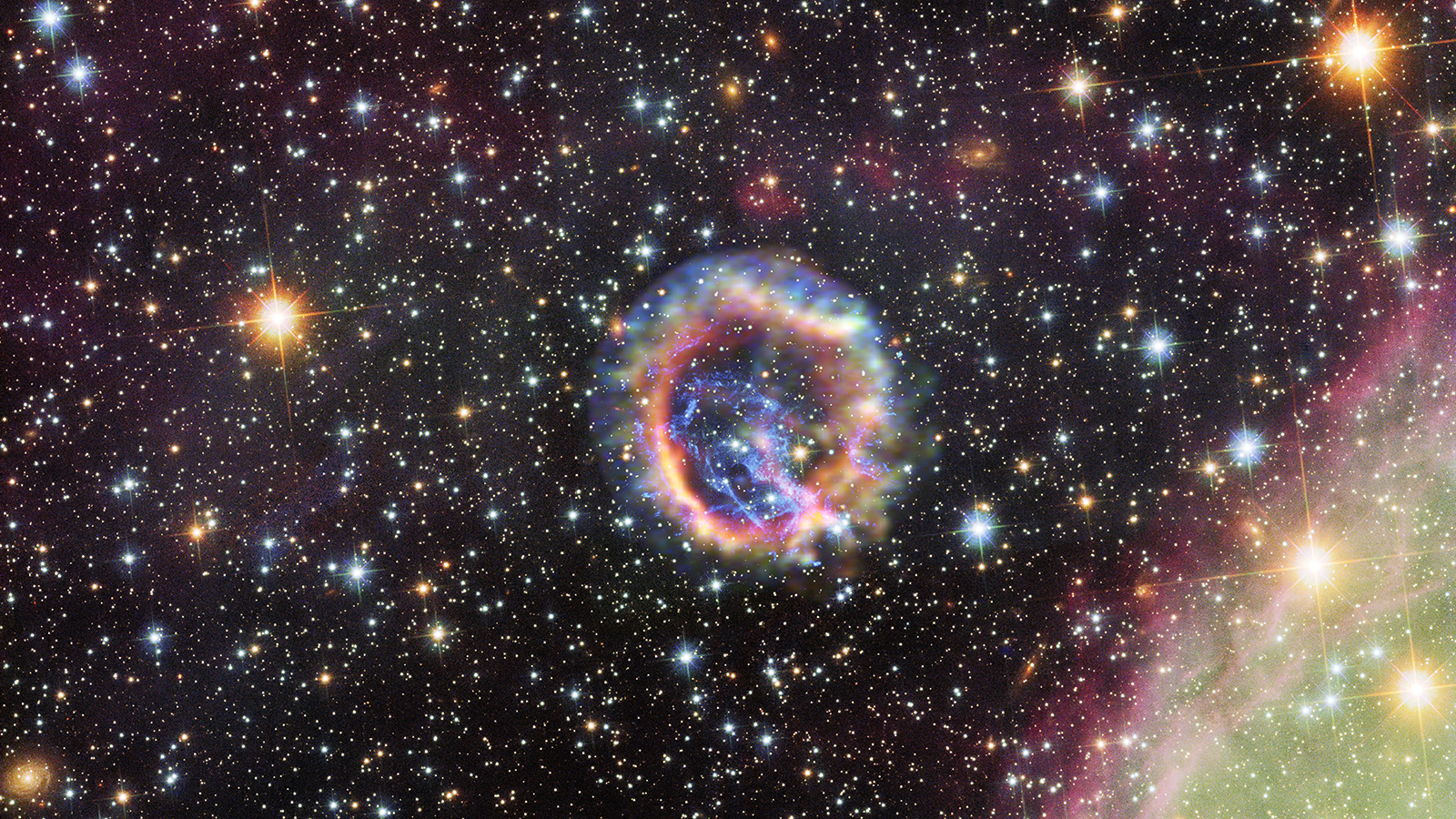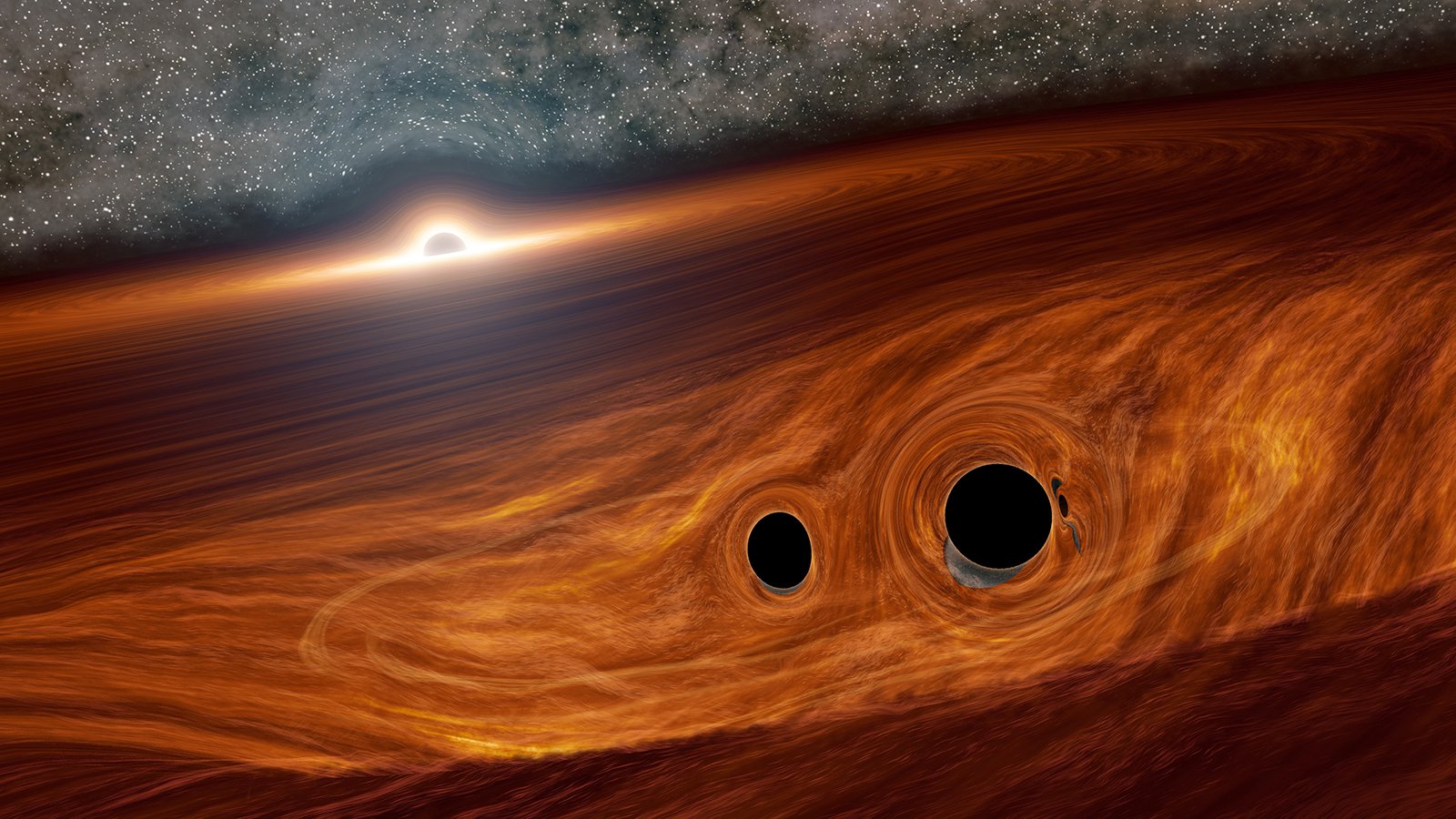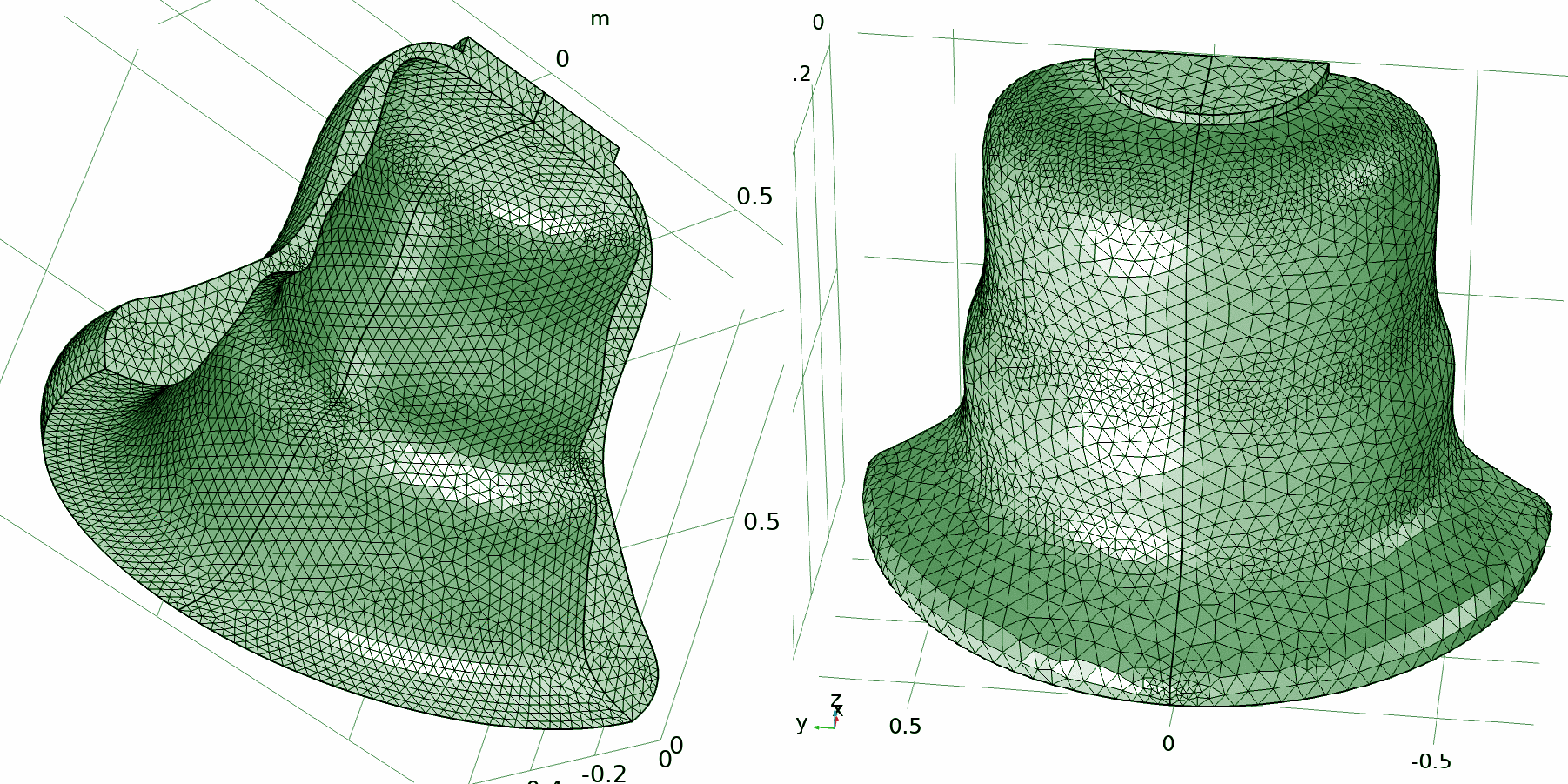

2. Star
flies
over
dark
matter
Commissioned by the Center for Contemporary Composition at the University of Chicago
Dedicated in admiration to Augusta Read Thomas
The first performance was given by the Grossman Ensemble, conducted by Vimbayi Kaziboni at the Reva and David Logan Center for the Arts, Chicago, on December 3 2021
Duration of the two movements: ca. 19 minutes, Live recording from the world premiere
Image credit: NASA, Caltech/R. Hurt (IPAC)
1. Motuum Cælestium
2. Star flies over dark matter
Score Follower Video
Program notes
Kids love storytime. It invites them to a completely new world in which anything can happen, even something beyond their imagination. In that world, they become new beings, which don't necessarily have to be anthropic (actually, it is very common that they become non‐human beings, e.g., frogs, rabbits, butterflies, whales, rainbow fish, unicorns, and even cars or gloves), and experience a sequence/timeline of a story deployed in a fantasied space and dimension.
While attending a storytime at a public library with my 5 years old little one, the idea came to me: writing a storytime; in this case it is not about a story unfolding on a timeline, but it is about the time unfolding in the storyline. Since music is the closest medium to the nature of time (physically, the definition of pitch is the times of oscillation in a unit time, and rhythm is the time), I wanted to write a piece about time, and invite the audience to experience being the time and join the journey of time. As I inhabited this new cosmic carnival/metaphysical amusement park, I realized that there were so many construction materials with which to design this time‐land architecture, because all music is somewhat about time, and time is the heart of music.
The first book of TIMESTORY is about stars, bells, movements, time, and their allegories, as the subtitle, An Astropastoral, suggests. The bell material builds upon my doctoral dissertation research. It uses the spectral data from the acoustical models of bell sounds and the modelling of virtual bell shapes by synthesizing engineering physics and campanology, using the Finite Element Method (FEM) technique. Note that the bell has always been the time keeper in our history, as the linguistic origin of “clock” is from the medieval Latin word “clocca,” which means bell. In this movement, there are multiple epiphanic moments when the clockwork sequence stops, and the ensemble becomes a gigantic bell/bell‐ecology. In the bell‐space there are multiple temporal and spatial layers, where various time‐beings are living and singing. The second movement is a passacaglia, which is interrupted twice by static episodes built upon a strong descending force. Here the falling stars/dying time metaphor is not about the morbid fear of death, but is about the beauty of the eternal return, the gravity of time.
The subtitle of first movement is from Newton’s book, PRINCIPIA: “Gravitas ergo non erit occulta causa motuum cælestium; siquidem ex phaenomenis ostensum est, hanc virtutem revera existere,” which can be translated as “The gravity of the cause of the motions of the celestial things, therefore, is not an occult; Indeed, the phenomenon has been shown that this force actually exists.”
Text from The Bells (1848) by Edgar Allan Poe
I. Hear the sledges with the bells—
Silver bells!
What a world of merriment their melody foretells!
How they tinkle, tinkle, tinkle,
In the icy air of night!
While the stars that oversprinkle
All the heavens, seem to twinkle
With a crystalline delight;
Keeping time, time, time,
In a sort of Runic rhyme,
To the tintinabulation that so musically wells
From the bells, bells, bells, bells,
Bells, bells, bells—
From the jingling and the tinkling of the bells. [...]
IV. Hear the tolling of the bells—
Iron bells!
What a world of solemn thought their monody compels!
In the silence of the night,
How we shiver with affright
At the melancholy menace of their tone! For every sound that floats
From the rust within their throats
Is a groan.
And the people—ah, the people—
They that dwell up in the steeple,
All alone,
And who tolling, tolling, tolling,
In that muffled monotone,
Feel a glory in so rolling
On the human heart a stone—
They are neither man nor woman—
They are neither brute nor human—
They are Ghouls:
And their king it is who tolls;
And he rolls, rolls, rolls,
Rolls
A pæan from the bells!
And his merry bosom swells
With the pæan of the bells!
And he dances, and he yells; Keeping time, time, time,
In a sort of Runic rhyme, [...]

Bell geometries with extra fine mesh (3D tetrahedral element) calculated and rendered by the Finite Element Method
Research link
TIMESTORY for 13 soloists is commissioned by the Center for Contemporary Composition at the University of Chicago and dedicated in admiration to Augusta Read Thomas. The first performance was given by the Grossman Ensemble: Tim Munro (flute), Andrew Nogal (oboe), Katherine Schoepflin Jimoh (clarinet), Taimur Sullivan (saxophone), Matthew Oliphant (horn), Greg Beyer (percussion), John Corkill (percussion), Ben Melsky (harp), Daniel Pesca (piano and synthesizer), MingHuan Xu (violin), Hanna Hurwitz (violin), Dominic Johnson (viola), and Hannah Collins (cello), conducted by Vimbayi Kaziboni, at the Reva and David Logan Center for the Arts on December 3rd, 2021.

